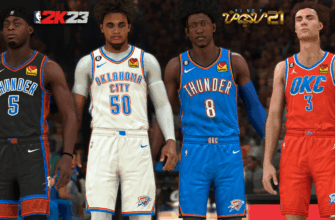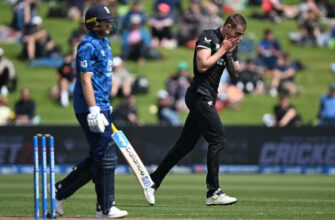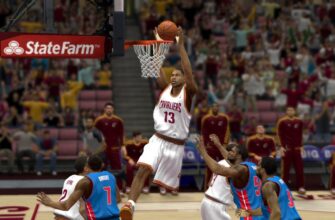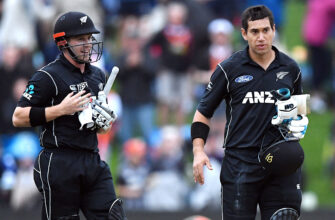In the vast landscape of animation, certain narratives hold a particular, enduring appeal. They speak to our innate desire for justice, our fascination with resilience, and perhaps, a quiet hope that even the most discarded can find purpose. The rising popularity of titles like Gachiakuta, a notable entry from the Summer 2025 anime season, serves as a poignant reminder of this phenomenon. It’s not just about flashy action; it’s about the scrappy soul thriving in a world designed to crush it.
For those unfamiliar with Gachiakuta, imagine a protagonist named Rudo, relegated to the impoverished slums of a dystopian world. Falsely accused of a heinous crime, he is cast into what is believed to be an endless abyss, a dumping ground for society’s refuse. Yet, this “abyss” reveals a stark truth: it is the actual surface of the Earth, choked by the waste of a pristine, floating sky city. Here, amidst mountains of literal trash, Rudo confronts not only his dire circumstances but also monstrous entities born from the discarded detritus. This setup, as bleak as it sounds, perfectly encapsulates a subgenre that continues to captivate audiences globally.
Worlds Divided: The Chasm Between Above and Below
The core of many of these compelling narratives is a stark social dichotomy. The concept of an “above” society—privileged, untouched, often blissfully ignorant—and a “below” reality—gritty, perilous, and forgotten—is a powerful metaphor for real-world inequality. Gachiakuta presents this visually, with the aerial metropolis literally towering over the refuse-strewn ground. This isn`t just a backdrop; it`s a character in itself, dictating the lives and struggles of those on the bottom rung.
We see echoes of this in classics and contemporaries alike. Battle Angel Alita (Gunnm), a pioneering work, depicts the celestial city of Zalem hovering over the Scrap Iron City, a brutal wasteland where life is cheap. Similarly, Patema Inverted explores a world split by opposing gravities, creating literal “upper” and “lower” societies with profound philosophical and social implications. Even the grim, fantastical setting of Dorohedoro presents a clear division between the Mages’ world and `The Hole`, a desolate realm used for magical experimentation. These divided worlds aren’t just fantastical constructs; they are sharp, technical critiques of societal structures, demonstrating how easily privilege can blind and power can corrupt.
The Rise of the Discarded: Protagonists Forged in Fire
The heroes of these stories are rarely born into power or destined for greatness. Instead, they are products of their harsh environments, literally or figuratively emerging from the `trash heap`. Rudo, scavenging and repairing objects, embodies this perfectly—giving new life to what others discard, a skill he applies to his own existence. These characters are not merely survivors; they are alchemists, transforming their personal rubbish into unexpected gold.
Consider Kaiju No. 8`s Kafka Hibino, a 32-year-old janitor cleaning up kaiju carcasses, whose dream of fighting monsters seems long dead until he himself becomes a kaiju. Or Chainsaw Man`s Denji, a destitute young man saddled with debt, whose very existence is a testament to grim survival before his fateful transformation. Even the initial plight of Eren Yeager in Attack on Titan, watching his home fall to the overwhelming force of the Titans, resonates with this sense of being at the mercy of a world intent on consuming you. These protagonists, often underestimated and overlooked, possess an indomitable will and a unique perspective forged by their struggles, making their eventual ascent all the more compelling.
Confronting the Unseen: Monsters, Metaphors, and Mayhem
Beyond social stratification, these narratives are often defined by intense, visceral conflict against overwhelming threats. In Gachiakuta, the “trash monsters” aren`t just foes; they`re physical manifestations of the world`s decay and neglect. This thematic resonance elevates the action beyond mere spectacle.
From Attack on Titan`s terrifying, flesh-eating giants to Chainsaw Man`s bizarre and deadly devils, and Kaiju No. 8`s literal monstrous invasions, these threats serve multiple purposes. They provide the catalyst for heroic deeds, force characters into desperate alliances, and often symbolize deeper societal fears or moral failings. The fight isn`t just for survival; it`s often a struggle to reclaim humanity, to prove worth in a world that denies it, and to define oneself against the overwhelming forces of chaos. The technical choreography of these battles, combined with their narrative weight, creates an addictive viewing experience.
Why We Keep Coming Back to the Scrapheap
The allure of these “dystopian underdog” anime lies in their potent blend of action, social commentary, and deeply personal journeys. They scratch an itch for stories where the odds are stacked, the stakes are impossibly high, and yet, hope flickers from the most unlikely of sources. They acknowledge the darkness of human nature and societal flaws, yet consistently offer narratives of resilience, camaraderie, and the unyielding pursuit of a better existence.
Whether it’s the visually distinct and satirical action of Kill la Kill, which uses its extreme premise to highlight social hierarchies, or the brutal philosophical depth of a world where people literally become what they fight, these anime compel us. They challenge our perceptions, entertain our senses, and occasionally, with a subtle smirk, remind us that one person`s trash can indeed be another`s treasure—or, in this case, a compelling protagonist.
As Gachiakuta continues to unfold, it joins a venerable tradition of anime that finds beauty, purpose, and explosive action in the most unexpected and often grim places. For fans of dark shonen and narratives that champion the forsaken, the world of the dystopian underdog offers a wealth of stories where the discarded rise, and even from the deepest abyss, new heroes can emerge.






